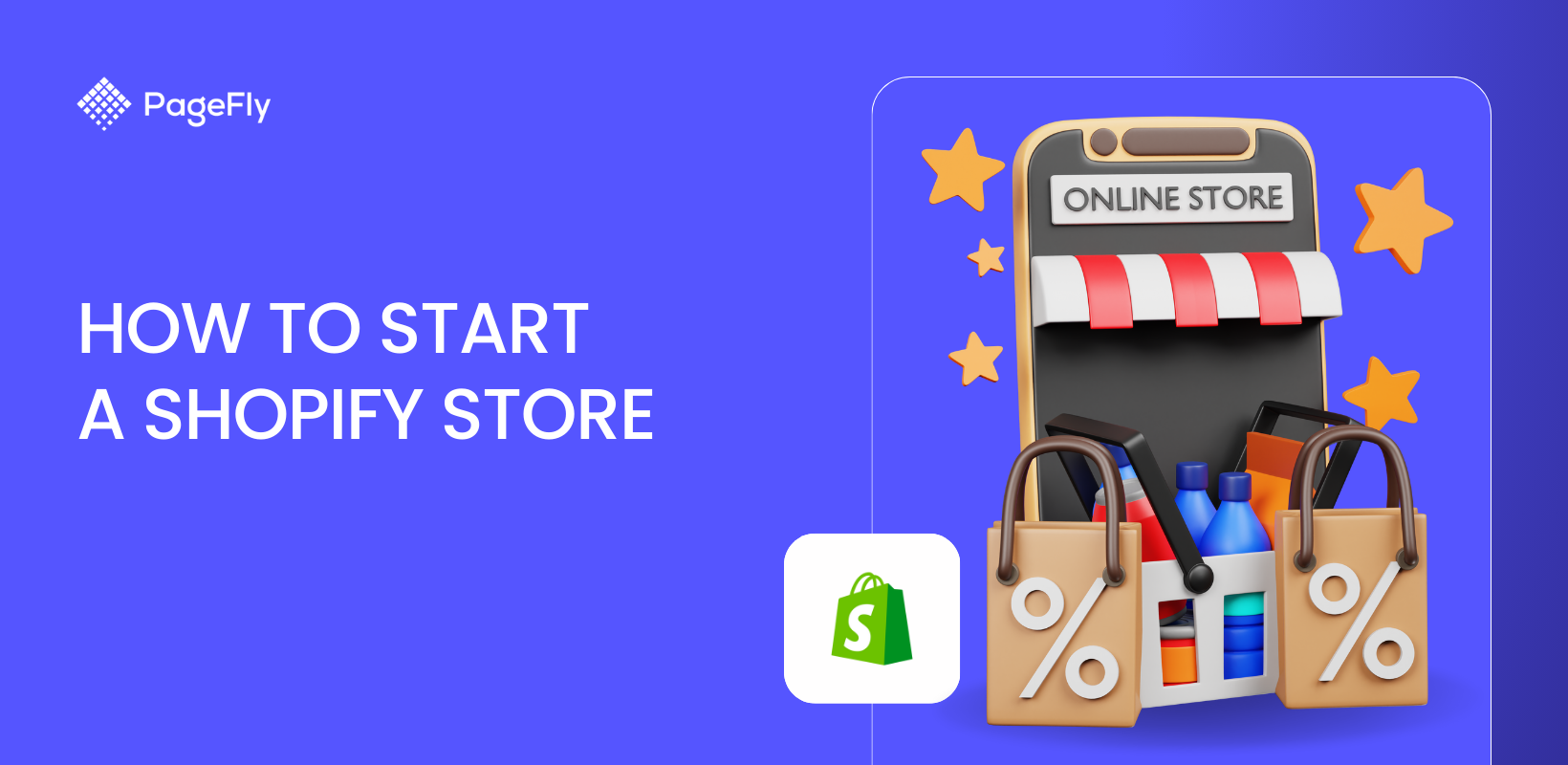The Global eCommerce market volume is projected to hit US$4,703.00bn by 2028. Why limit your store to domestic markets, when you can sell to all multiple countries in the world.
However, managing an online business internationally is not an easy task to do. Hence, a comprehensive tool like Markets Shopify is necessary on your journey.
In this article, we will talk about what is Shopify Markets, getting started with it, and how to set it up step-by-step.
Let’s get started!
Shopify Markets: Summer'24 Edition Update
Markets is a game-changer, unifying cross-border sales, B2B operations, and point-of-sale transactions in one place.
Shopify's Summer'24 edition introduced a revamped Shopify Markets, making it a central hub for managing all your sales channels. Here's a breakdown of the key features:
- Unified Business Management: Get a consolidated view of all your markets and their configurations. No more jumping between different interfaces!
- Customized Buyer Experiences: Tailor your product catalog, pricing, and store themes for different regions to provide a localized shopping experience for each market.
- Enhanced In-Person Selling: Manage pricing and product availability for your brick-and-mortar stores seamlessly alongside your online marketplaces.
- B2B Expansion: Customize store themes specifically for your B2B markets, catering to the needs of wholesale buyers.
Overview of Shopify Markets
What is Shopify Markets
If you are a Shopify merchant, expanding and growing your business might be an ultimate goal. Reaching Shopify cross border markets is also one of the best ways to achieve that goal.
>>> In case you are new to selling online, don’t miss our list of sell-this-now items for a solid start.
On the journey to sell globally, you might need a tool like Markets Shopify to help you deal with complex tasks such as currencies, taxes, payments, and more.
So what is Shopify Market?
Shopify's Summer 2024 update introduced Markets, a comprehensive platform that replaces the previous cross-border selling solution. Now, businesses can use Markets to expand their reach not only internationally but also into retail and B2B markets (B2B features are exclusive to Plus plans).

Shopify Markets come along with international selling tools and an array of features to help you scale, strategize, and manage your global market – all from a single store.
With Shopify Markets, merchants can sell directly to global customers without involving any third party. Shopify Markets does everything for you, which includes currency conversions, language barriers, payment methods, and calculating duty & Import taxes.
Undoubtedly, Shopify markets aims to help merchants optimize their business for cross-border selling. Let’s dive in to know more about its features and capabilities.
>>> Read more: How to start a Chocolate Business?
Shopify Markets Pricing
If you are looking for Shopify Markets Pricing and wondering "Is Shopify Markets free?", the answer is Yes.
Many Markets Shopify's features are entirely free to use. These include market-specific storefront, domains and subfolders, translation, content for different markets, and custom pricing for specific markets.
Markets allows you to establish yourself in as many nations as you want for free, and you can take your time researching new locations as you look for your next big audience.
Managed Markets (Formally Markets Pro)
Managed Markets (Markets Pro) simplifies selling to new international customers by handling the complexities of cross-border commerce. This Shopify feature automates compliance with local regulations, tax calculations, duty payments, and international shipping. Additionally, it provides product localization services.
To access Managed Markets, your Shopify store must be on the Basic plan or higher and have an online store.
There are no monthly fees or long-term commitments associated with Managed Markets. You can discontinue the service at any time. For international orders,
- Managed Markets (Markets Pro) charges a 6.5% transaction fee, which includes payment processing.
- An additional 2.5% currency conversion fee (FX fee) also applies. You can adjust product prices for different international markets to accommodate these fees.
Note: Exclusive shipping rates, local tax compliance, fraud prevention, duties setup and labeling, guaranteed duties, automated duties remittance, pre-customs clearance, local acquiring, or limited management for international sales are not aspects of Shopify Markets. Markets Pro is a combined program that removes these components off your plate.
What Can You Do With Markets Shopify?
01. Streamlined Currency Conversion for Global Markets
With Shopify Markets, you can automatically convert your storefront prices to 130+ currencies.
This is a significant feature when 92% of online customers prefer to shop on a website that offers products in their local currencies.
Shopify Markets automatically adjust your store prices based on the latest exchange rate.
Moreover, stores offering local currency products enjoy a 1.2X higher conversion rate.
02. Language Translation
According to Shopify, 75% of customers like to buy products in their native language.
That makes localizing the language in your store as crucial as localizing currency.
Sometimes, with international eCommerce, it becomes overwhelming to provide a consistent customer experience.
But, these minor yet significant custom buying experiences can bring up to a 16% increase in conversion rates.
Shopify Markets provides the option to adjust your store's language. You can do this by simply going to the Languages tab inside Settings.
In case you don’t see the language you want your store to be in, you can download third-party translation apps to translate and import data to your store.
Shopify Markets utilize third-party translation apps to translate your store and copy.
Language translation works on every page of your store, from product pages to checkout pages - it covers every piece of content.
03. Region-Specific Domains & SEO
Undoubtedly, acquiring international domains enhances your SEO performance.
Shopify Markets enables a simple solution to your country-specific domain strategy. It automatically provides subfolders for every new market created.
For example, your US market can be at your example.com, while your Canada market at example.com/en.ca.
You can also create a subdomain like ca.example.com or region-specific domains like example.com.ca.
Once you have opted for a domain, Shopify Markets will automatically generate SEO tags to help your store gain visibility in the search results.
Even if a customer visits the wrong domain, Shopify will redirect them to the region-specific domain by locating their IP addresses.
04. Local Payment Methods
While credit cards are a universal payment method, some countries prefer other payment options.
- In the US, 82% (source: ccbill.com) of customers prefer credit cards as their primary payment method
- In Europe, 80% (source: ecommercenews.eu) of people prefer Digi-wallets like Paypal or Alipay for processing payments
- In the Netherlands, the Bank transfer system is the most preferred online payment method (source: statista.com)
Given these statistics, Shopify Markets provides various payment methods.
It automatically adds the most preferred payment option in a country/region to your checkout. This allows your customers to get a pleasant store experience and pay irresistibly.
05. Automatic Collection of Duty And Import Taxes
Do you know the duties and taxes charged across different countries?
Likewise, International buyers might be unclear about the taxes leveraged on checkout.
Shopify store owners must provide the information upfront to the buyers to avoid any delivery problems or customers paying additional charges while receiving the goods.
Shopify Markets simplifies the process by compiling the duties and import taxes in advance and automatically providing the information at checkout.
Undoubtedly, duties and taxes are a significant part of your international business strategy. You can’t just ignore it.
Differences between Shopify & Shopify Plus International selling with Markets
The powerful features of Shopify Markets have made cross-border selling as easy as clicking a button. But, the features slightly differ for merchants on Shopify and Shopify Plus.
Common Features Made for Shopify & Shopify Plus Merchants
- Manage global market from one store
- Sell in 130+ currencies
- Provide local payment methods
- Sell in up to 20 languages
- Set up custom domains for local SEO
- Smart settings that optimize operations
Additional Features for Merchants on Shopify Plus
- Collect duty and import taxes at checkout
- Set market-specific custom pricing
- Shopify payments customize catalogs and storefronts for each market
- Manage fulfillment locations per market
💡 Quick Read - How Does Shopify work? A Beginner’s Guide to Start Selling on Shopify
How to Set Up Shopify Markets
Shopify Markets ease the burden of doing business globally. It lets you manage your international store with a single dashboard.
However, the dashboard comes along with multiple elements or features.
This section will help you understand how to set up Shopify Markets, customize your store and enhance your customer experience.
Step 1: Access Shopify Markets
Sign in to your store and click on Settings in the bottom left corner.

Then go to Markets to access your Shopify Markets dashboard.

Step 2. Create Your Markets
Herein is your Shopify market dashboard! You can begin your international selling journey here.
To begin with, click on Add Market on the top-right corner of the dashboard to add a specific country you want to sell your products (the image below is blurred for privacy purposes).

A drop-down appears with 130+ countries listed on it. You can either choose a bunch of countries or a specific country.

Step 3. Country-Specific Domains & Languages
Shopify Markets automatically add suffixes to your primary domain for every new marketplace you create.
You are free to customize your subdomain. However, we recommend keeping the default suffix provided by Shopify.
After configuring a region-specific domain, the next big challenge is to localize your store language.
Well, this is no longer a challenge because Shopify automatically handles it for you.
To set-up and manage language for your store, go to Domains and Languages and click on Shop languages as shown below.

Now, your Shopify store constitutes of 3 different language preferences:
- Default Language: The language your online visitors see if their preferred language isn’t available
- Translated Language: The additional language you want to add for your international customers
- Account Language: The language only store owner will see while managing Shopify markets

For your comfort we have selected the default store language as English. To add a new language, click on Add language in your Shopify Market dashboard as shown below.

You will see a drop-down with multiple languages. Choose the language into which you want to translate your store.

If, by any chance, your desired language is not published in the list. Visit Shopify app and install a compatible translation app for your store.
Shopify Markets offers third-party translation apps which are easily downloadable from its app store.
Step 4. Currency & Pricing
Shopify Markets allow you to easily manage your currency and pricing with a few clicks.
It offers the following:
- Currency Conversions: Select your preferred currency from over 130 region-specific currencies
- Automatic Conversion Rates: Get a real-time valuation of your native currency compared to your preferred currency in the global market
- Price Rounding: Shopify Markets automatically round off your storefront prices to avoid unattractive pricing patterns such as decimals

Shopify markets offer a complete pricing solution for your online store. You can adjust your currency & pricing for each market directly within the dashboard.
Step 5. Import Duties & Taxes
Shopify Markets automatically collects duties and taxes at checkout.
All you need to do is, Open Duties and Import Taxes section in the dashboard > Enable the feature > Select specific countries where you want to collect duties.

That’s it! Shopify will automatically add the duties and taxes levied by your target market during checkout.
Step 6. Delivery & Shipping
Shopify Markets allow you to manage and set up your shipping rates across different regions.
For this, click on Manage rates in the Delivery and shipping section, as shown below.

For example, a store may consider free shipping to local customers. But, for international orders they might include some overhead charges.

To customize your delivery charges, click on the Add rate button in the bottom left corner to manage your delivery fees for new markets.
Now, you can always set up your own rates or use an app for calculating rates.
You can also manage your shipping speed as per your business convenience and finally set a price for your product deliveries.

Moreover, you can also add conditions for shipping.
To do so, click on Add Conditions and customize your shipping with essential delivery conditions - based on item weight or based on order price.

Shopify Markets make it a lot easier to sort out International shipping rates.
But, how are your customers going to pay you? Let’s see!
Step 7. Payment Methods
Shopify Market dashboard automatically shows you the preferred payment methods in your selected region/country.

Note: The payment methods are region-specific. If you create a market in the United Kingdo.m The payment methods will automatically sync with popular payment options in the UK.
Step 8. Global Inventory Function
Note: This feature is available as a beta version and is provided to selected merchants on request.
With Shopify Markets, stores can allocate their inventory to different locations.
This Shopify cross border inventory function will automatically show your customers the inventory available in their region.
Suppose you have fulfillment partners in the USA, Germany, and France with the following inventory levels and destinations.
Fulfillment Partners | Inventory Count | Shipping Regions |
USA | 500 | United States, Spain, France |
Germany | 200 | Germany, Canada, Italy |
France | 100 | France, Canada, Switzerland |
If a customer from Italy visits your website, he will see the total units available as 200. While a shopper from France will see total units available as 600.
That’s because Shopify automatically adjusts your storefront inventory according to product availability with your fulfillment partner.
This helps you avoid situations where an order is placed but cannot be fulfilled.
You can always manage your inventory from your products dashboard.
Pros & Cons of Shopify Markets International
Shopify Markets pros
If you are a merchant who want to expand your business, this Shopify international selling tool is ideal with these advantages:
- User-Friendly Interface: The platform is incredibly easy to use, even for those with little to no technical expertise. This makes it accessible to a wide range of users
- Scalability: Expand to 200+ countries and regions can help you reach more audience and increase sales
Cons of Markets Shopify
Although the tool has several benefits and functionalities to help Shopify sellers go global, it also have some drawbacks, such as:
- Fee for Pro plan: One of the main drawbacks is that there is a fee to use the Pro plan with more features. This may not be affordable for everyone, especially small businesses or startups.
- Transaction Fees: In addition, there are also transaction fees. These may add up over time, particularly for businesses that process a large number of transactions.
Wrapping Up Shopify Markets
Shopify Markets offers solutions to the most significant pain points of merchants aspiring to leverage international commerce.
The tool for managing cross-border operations is easy to set up and comes along with many handy features. So, if you’re willing to expand your Shopify store internationally, Shopify Markets is the easiest way to get started.
Shopify Markets international selling feature allows you to optimize your store for a particular region with the help of data collected from millions of merchants. It provides you with actionable insights to boost your business performance and set achievable goals.
Moreover, you don’t need to do anything manually!
Shopify's intelligent settings automatically make adjustments and optimize your store based on regional demographics and insights.
So, when you get 90% of your store work done automatically, it’s time to focus on selling in International markets with Shopify.












![27 Best Shopify General Stores + Complete Strategy Guide [2025]](http://pagefly.io/cdn/shop/articles/Best_Shopify_General_Stores_2f9d09f2-7c38-4da9-a495-e9f4898ddd68.jpg?v=1757271936&width=1640)





